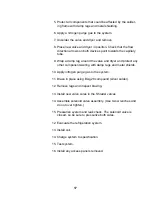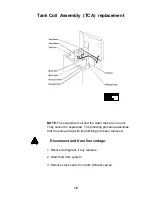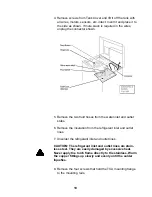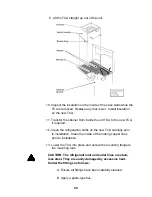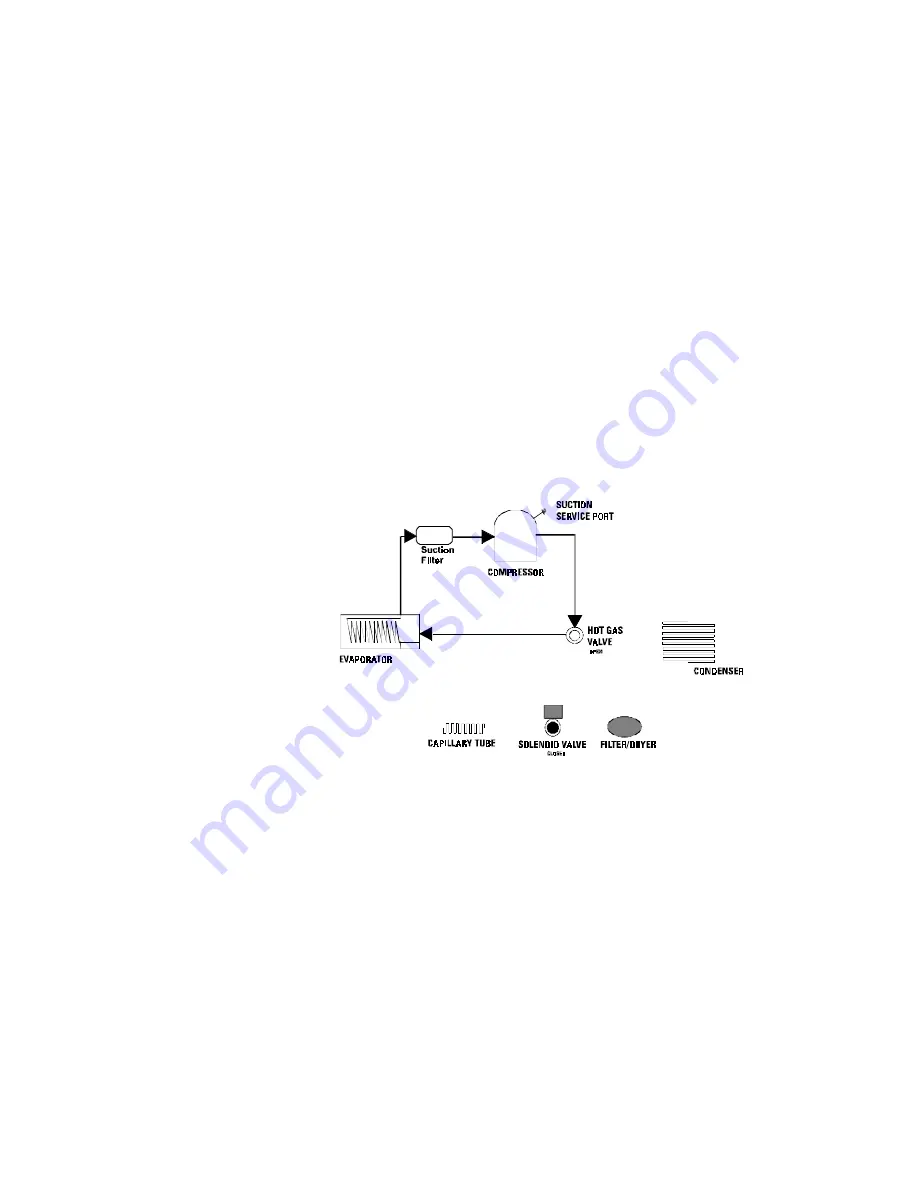
6
Refrigerant, as a gas, is pressurized in the compressor. It then
enters the condenser and changes to a liquid due to the cooling
provided by the fan and condenser fins. Heat is given up to the
air at this point. The liquid refrigerant exits the condenser and
passes through a filter/dryer which traps contaminants and
absorbs any water moisture in its desiccant element. The refrig-
erant then passes through the open solenoid valve and enters
the capillary tube. The restriction of the tube meters the flow.
The capillary tube ends at the evaporator.
The evaporator is a coil located inside the fluid tank. As the
liquid refrigerant encounters the increased volume of the evapo-
rator, it expands tremendously, changing from a liquid to a gas,
and absorbing heat from the fluid (cooling it) in the process. The
refrigerant, now a gas, exits the evaporator and passes through
the suction filter. The refrigerant then enters the compressor at
low pressure and is re-compressed.
HEAT/IDLE MODE
If the setpoint is above the actual temperature, the controller is
in HEAT/IDLE mode. The triac output opens, turning the solenoid coil off. The
solenoid valve then drops closed. This closed valve stops the flow of refrigerant.
During the heat/idle mode when the liquid line solenoid valve is closed, the
pressure drops in the suction line back to the compressor. When the pressure
drops to a predetermined value, the hot gas bypass valve will open and allow
hot gas to flow to the evaporator as stated. The hot gas valve opens on a
decrease in pressure on its discharge port. The discharge port is connected to
the evaporator side of the system. The refrigerant gas is now routed directly to
the evaporator. The gas is not allowed to condense, as it has bypassed the
condenser completely. The hot gas passing through the evaporator
coil adds some heat to the fluid, then returns directly through the suction filter
to the compressor. This unloads the compressor, resulting in lower discharge
pressure, higher suction pressure, and less power consumption. Observing the
suction pressure in this mode will indicate the setting of the Hot Gas (ADR)
valve.
Summary of Contents for NESLAB HX 150
Page 9: ...9 Troubleshooting Chart Weak cooling ...
Page 10: ...10 Troubleshooting Chart Weak cooling continued ...
Page 11: ...11 Troubleshooting Chart Refrigeration pressures ...
Page 42: ...42 ...
Page 47: ...47 ...
Page 51: ...51 ...

















